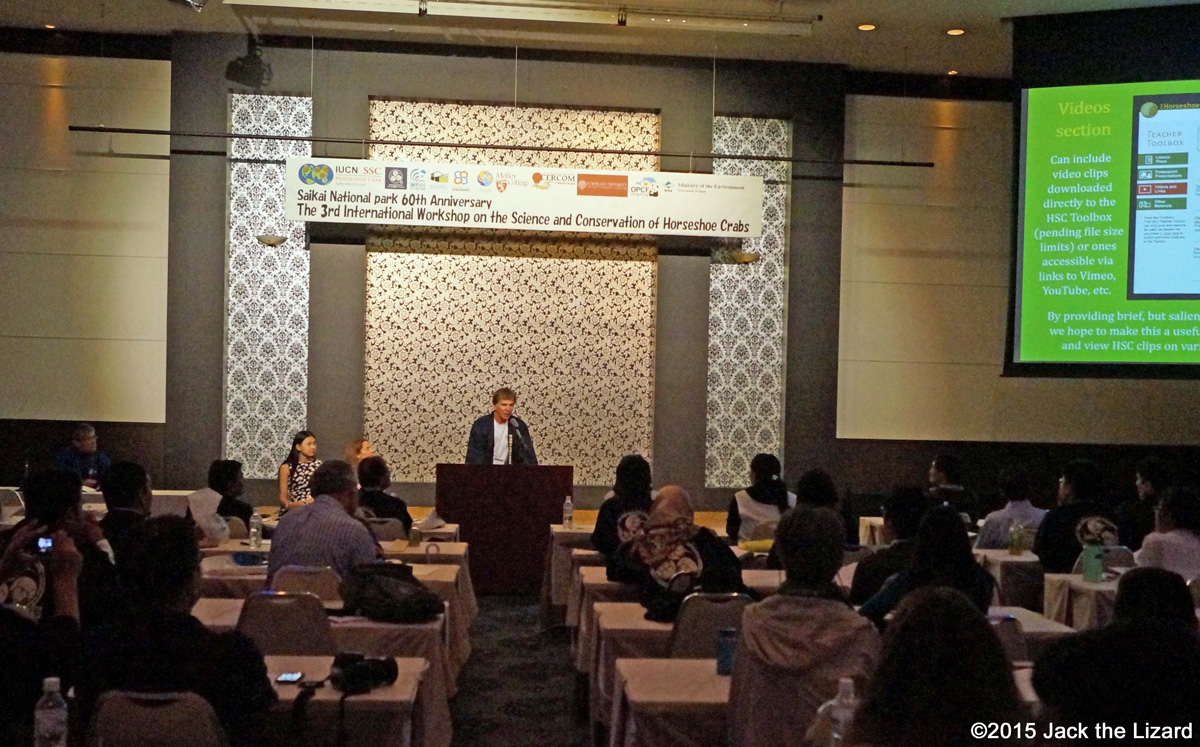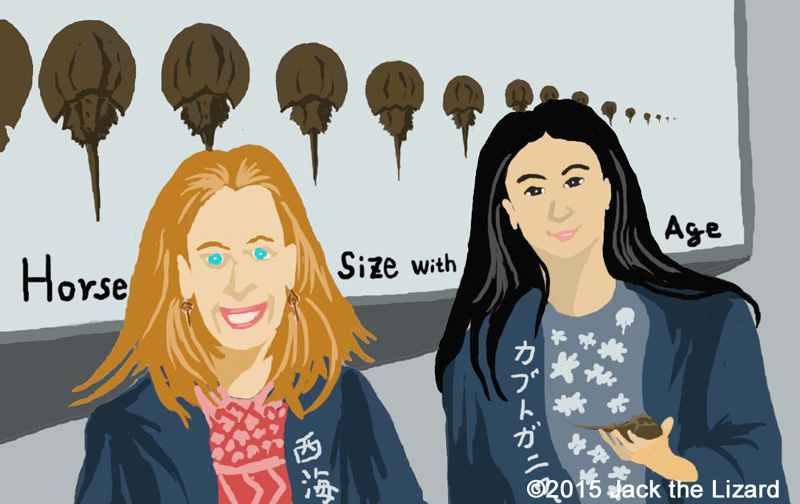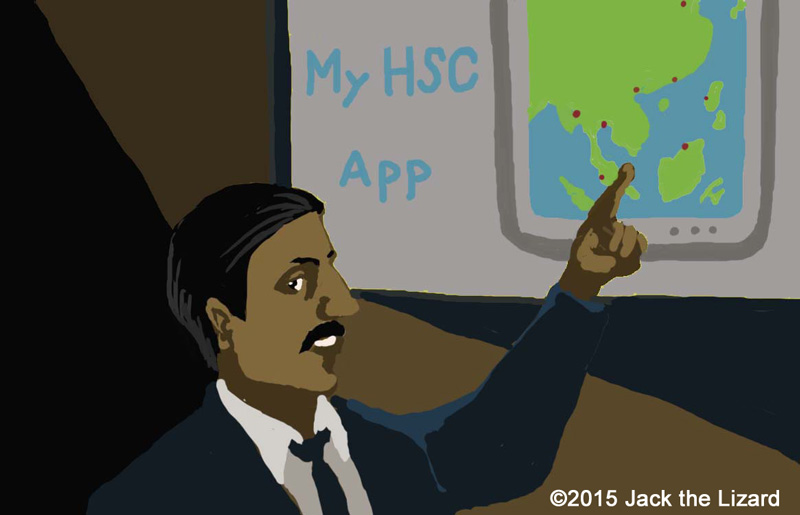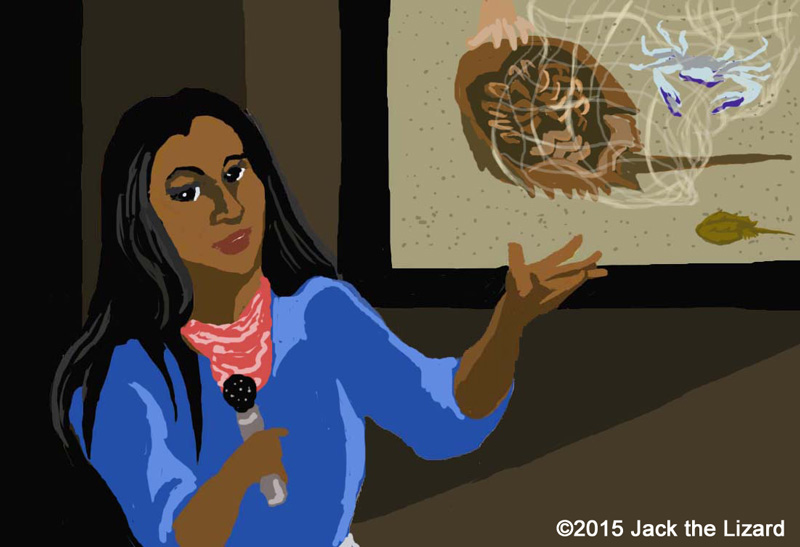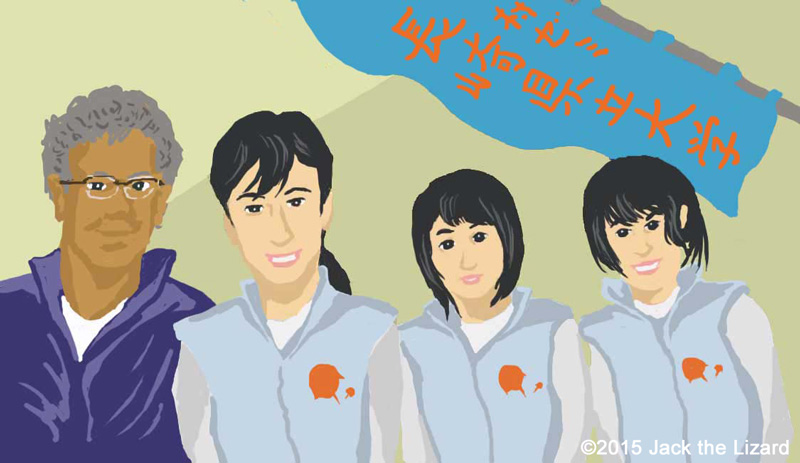|
First Time for Invertebrate
Dr. John T. Tanacredi is the director of Center for Environmental Research and Coastal Oceans Monitoring (C. E. R. C. O. M.), and also professor of Earth and environmental studies at Molly College on long island, N.Y. He is the one of the starting member of HSC specialist group in IUCN (International Union for Conservation of Nature).
One species of HSC (Atlantic Horseshoe Crab, Limulus polyphemus) is found in the United States. Their habitats extend from the coast of Maine to Florida. Although the total population is stable in the United States, in long island the number is declining at fast rate, approximately 9 % of total. Dr. Tanacredi has been monitoring 111 sample sites in Long island to prevent further decrease. “Most effective way to protect HSC is preserve healthy habitat for them and to do so we need to keep close watch on the condition of the habitat”, said Dr. Tanacredi. As he is the HSC specialist in IUCN, he also wants to promote the status of HSC around the world. “It would be wonderful that HSC gain international recognition like Giant Panda or African Elephant did. If we can do that, they will be the first invertebrate become famous”, he said with smile.
Future of Asian Horseshoe Crab
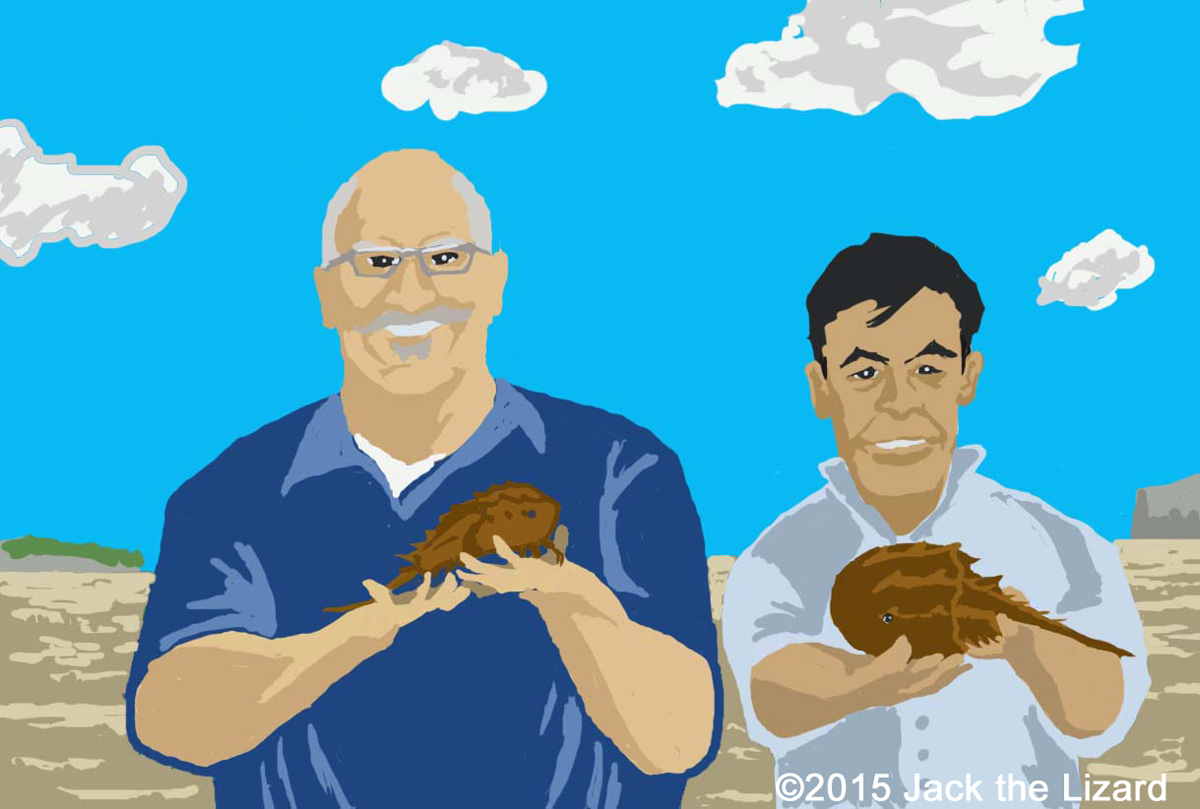
Dr. Tanacredi and Dr. Shin
|
There are three species of HSC in Asia, the mangrove HSC (Carcinoscorpius rotundicauda), Tachypleus gigas, and Tachypleus tridentatus. They occur in coast of the Far East Asia, Southeast Asia, and India. For millions of years they have survived on our planet, in Asia however they are in crisis.
Dr. Paul K.S. Shin, City University of Hong Kong, have dedicated to forming HSC species specialist group with Dr. Tanacredi since 2007. As they have been analyzing a huge pile of data, finally HSC Species Specialist Group has acquired accreditation of IUCN in 2012. But they have set their next goal already. Dr. Mark L. Botton, Fordham University N.Y., said “Putting HSC on the Red Data List of IUCN as threatened species does not guarantee their protection, but that certainly adds great credibility on our conservation”. In the United States the data of HSC is accumulated, but in Asia it is far from enough. Dr. Shin explains about the situation in Asia. “We urgently need to contact with people from Thailand to get the data there and Vietnam, Brunei Darussalam and Myanmar as well. Most important data is the condition of habitats, but we don’t know at all in Asia”. In Hong Kong HSC is facing difficult breeding for next generation, whereas Dr. Shin has optimistic view of future.
“Now we have young generation who care HSC and not only scientists but people from several fields have interest in HSC. We also need both information and action, that is why we call this meeting workshop, not conference”, he said with confidence.
The Gift of 450 Million-Year
Saving Horseshoe Crab Saving People
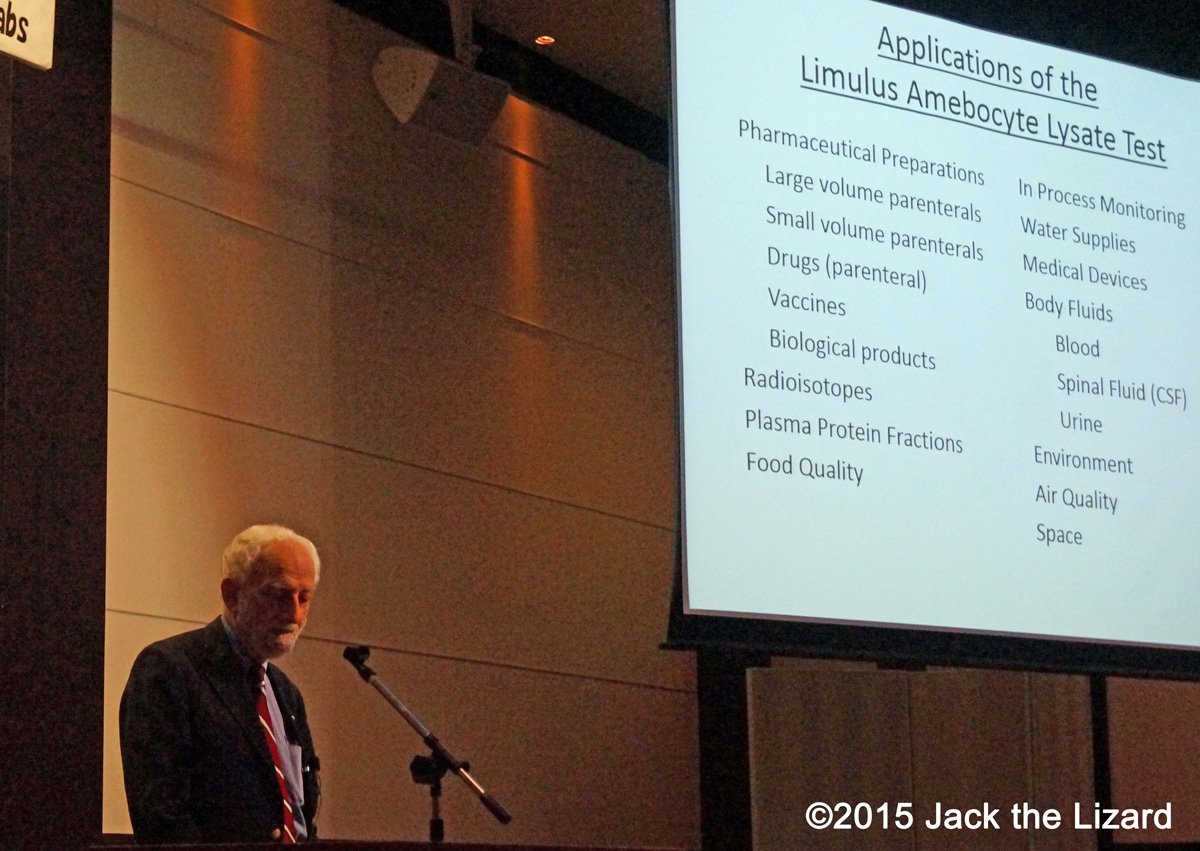
Dr. Jack Levin
|
Dr. Jack Levin, Professor of Medicine University of California, is the pioneer of the LAL (Limulus ameboctye lysate) Test. He had discovered that blood system of the Atlantic Horseshoe Crab (Limulus polyphemus) had astonishing function in 1968 and this discovery lead the development of the LAL Test.
The Atlantic horseshoe crab has blood that detects viruses and micro bacteria before they invade the body. When the blood finds invasion, it surrounds invader and clots. Humans have also blood that coagulates when it is exposed to air. Platelets of human are similar to that of the Atlantic horseshoe crab as well. However the blood of this animal has much more acute sense than that of ours, because it has not immune system to develop antibodies and kill bacteria in the body. Nevertheless we have problem called bacterial endotoxin. Bacterial endotoxins are found in gram negative bacteria such as E.coli, salmonella, and shigella. Since it is extremely difficult to wash those bacteria away from drugs and medical equipment, they must be detected before they contaminate medicines and medical device.
During his lecture Dr. Levin said, “Bacterial endotoxins are everywhere. They cause severe symptoms such as fever, organ failure, and even death. The LAL Test is needed most for public health care today”.
The LAL test is also effective to detect endotoxins in a variety of body fluids such as blood and urine, and then determine if endotoxins cause clinical symptoms.
At the end of his lecture Dr. Levin emphasized on the importance of worldwide conservation efforts. “The conservation of HSC is critical for us and it is necessary for us to stop destruction of their habitats and protect them”.
We All Care
During the lecture some HSC scientists are concerned about health of HSC in the biomedical industry. Dr. James F. Cooper, Charles River Laboratories, South Carolina, has been studying the LAL Test for more than 40 years and he had also made the framework of a return-to-sea policy to prevent loss of live after collection. In 1973 the FDA (Food and Drug Administration) set the return policy as a regulation.
He explains about the management policy of pharmaceutical companies. “Crabs should be transported on right time and also protected from direct sunlight exposure. Handlers are trained to avoid injuries of crabs during the process of blood extraction. Immediate return to sea is also required and crabs are cleaned before back into wild. The mortality rate has been dropped up to 10%-15% since 1998”. Although the efforts are rewarded gradually, he still stresses the need for further restrictions on the bait industry and protection of nursery place such as sand flats. In the United States fishermen use HSC as bait to catch eel and conch. “In South Carolina we have set the protected area of HSC and the population has been increased since then”, said Dr. Cooper.
Everybody Wants Horseshoe Crab
Mr. Glenn Gauvry, President of Ecological Research & Development Group (ERDG) Delaware, said, “In the United States the harvest of HSC has been regulated and monitored, but in Asia virtually no regulations are exited and HSC populations are declining to critical levels”.
Pharmaceutical demands for blood of HSC are significantly increased and reach the limit of population of HSC both in the United States and Asia. Especially the demand of Asian HSC rapidly grows in China and the supply comes from across the world. There are no return-policy in China now.
Mr. Gauvry hopes that pharmaceutical companies choose right sellers who care about health and survival of horseshoe crabs in the world.
In Asia some people see horseshoe crab as food and female with eggs are often consumed. Pressure from food industries is serious consideration issue in conservation as well as habitat loss. Not only human needs them but many animals depend on their existence. Migratory birds pick the eggs on their way and sea turtles prey on horseshoe crab.
|
|
"The legend of Horseshoe Crab Conservation in Japan"
Keiji Tuchiya is the legend of HSC conservation in Japan and Asia. He explained how to distinguish between male and female during the workshop.
Mr. Tuchiya said “We must not kill this magnificent animal because they are survived millions of years and can save millions of human life.”
|
"The horseshoe crab teacher tool box"
by Gary & Sharon Kreamer and Yiying Sheng
Delaware Division of Fish and Wildlife and the Tatnall School
The horseshoe crab teacher tool box is available on-line and to anybody who want to share the information on HSC. During her presentation Ms. Sharon said, “We hope that by translating this tool box into several languages, many people will enjoy it in other counties”
Miss Yiying actually used this tool box to share the information on HSC with her classmates.
|
"Mobile application for tracking
and sighting of horseshoe crab"
by Mr. Akbar John, B
International Islamic University, Malaysia
This mobile application gathers information on the global distribution of HSC. It provides much educational information such as species information, real time point distribution maps, uploading and visualizing new sighting of HSC.
Mr. Akbar said, “Not only scientists can use this application but also general public and fisher men”.
|
"An example of HSC survey and conservation effort
in Kujukushima Islands"
by Mr. Akihiro Kawakubo
Kaujukushima Aquarium, Japan
Kujukushima islands are part of the Saikai National Park in Nagasaki. The Aquarium contributes research and conservation of the environment in Kujukushima islands. Since Kujukushima islands have many small islands without dwellers and the feature of complex coastal lines, it provides unique natural habitats such as beaches, tide pool, and rocky reef to many animals. Surprisingly 81% of coast lines are still intact and maintain their natural beauty. Together with local university and pubic organization the Aquarium conducts research and survey of HSC.
Kawakubo Akihiro said, “We want to pass our precious nature to next generation”.
|
"Using citizen science to engage and educate on HSC"
by Miss Kerry M. Pereira
Nature Society Singapore
Nature Society Singapore conducts HSC Rescue and Research Programme, and Population and Distribution Survey with local people. These two programmes include activities such as population survey on mudflat and free HSC stuck in fishing nets. After experiencing these programmes participants gain new level of understanding HSC. The programmes are so successful that each session attracts 100 volunteers now.
Also schools and government agencies take part in these programmes. Miss Kerry M. Pereira said, “generally speaking HSC is not a cuddly and cute animal. We want to reverse such negative image and attitude toward HSC. We are successful to get the attention from local media to international T.V. programs to save this historically and culturally important species.”
|
"High school students investigate the genetic sequence
of adult Chinese HSC in Hong Kong"
HSC living in Hong Kong are declining significantly. To find out one of the reason of the decrease High school students studied blood sample of HSC collected by the fishermen.
The result shows that collective HSC likely share the place of origin and students concern genetic continuity of HSC in Honk Kong. Not only do survey but they also clean up beach and release juvenile HSC with volunteers. Additionally students do research for public awareness of HSC both in Hong Kong and Japan. They surprised that the number of Japanese understanding and concern on HSC.
|
|

